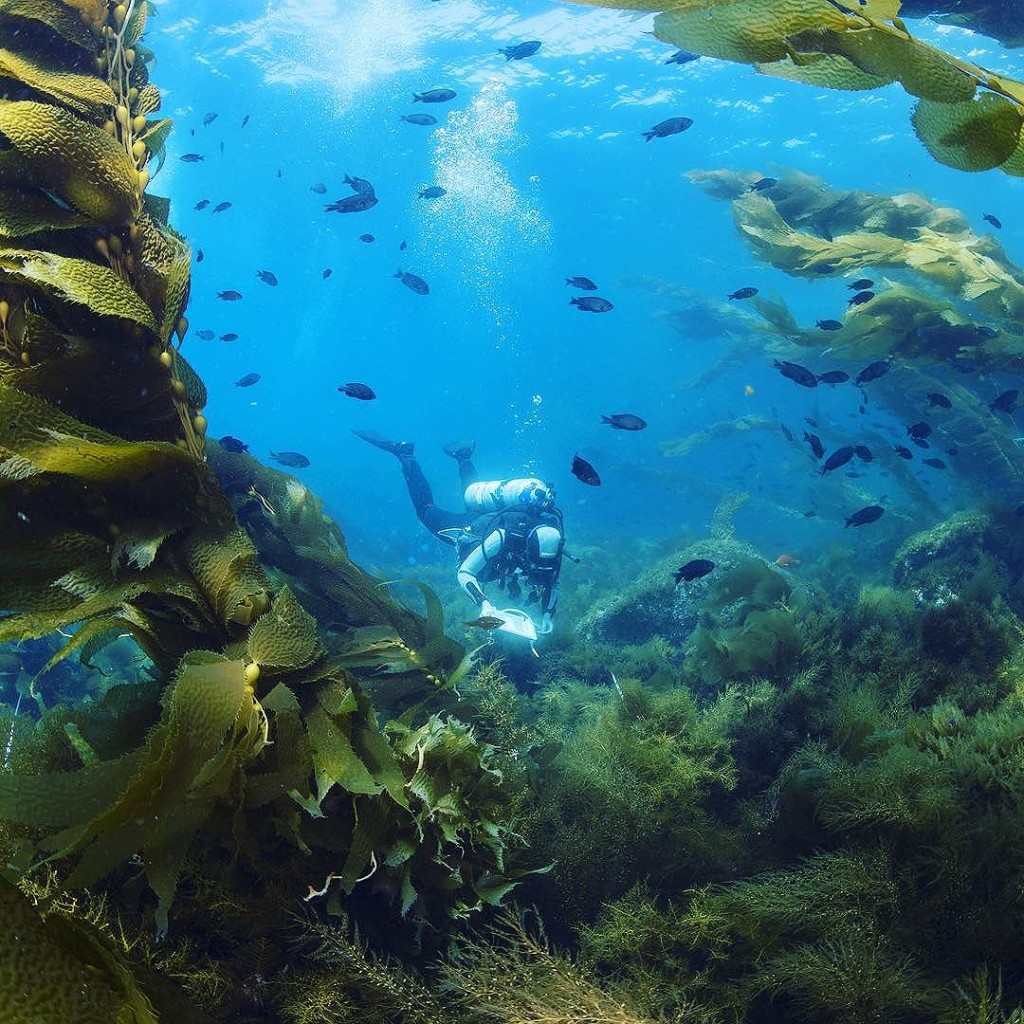California’s ocean economy is worth a whopping $43.5 billion. Tourism and recreation make up the lion’s share of that, accounting for 75% of ocean-related jobs. Part of what makes our coastal and ocean economy so strong is our state’s investment in the nation’s first statewide network of marine protected areas (MPAs), or underwater parks. Today, about 30% of the coastline and 16% of state waters are protected, including special places like La Jolla, Crystal Cove, and Point Reyes.
Underwater parks boost the numbers, size, and diversity of plants and animals living within their borders. They help safeguard critical ocean habitats and help all types of marine life to thrive, from the coral of the seafloor, to the fish and mammals that reach the water’s surface. In fact, MPAs are shown to be more resilient to climate change and other environmental disturbances than non-protected areas. They have been called ‘hope spots,’ because they are our best hope for restoring the beauty and bounty of ocean life threatened by climate change, overfishing, pollution, and habitat destruction.
In addition to MPAs, California has developed other tools to protect sensitive marine ecosystems. The State Water Board created 34 Areas of Special Biological Significance (ASBS), a type of protected area that aims to improve water quality to protect important marine species and habitats from the threat of stormwater pollution. Polluted runoff is supposed to be prohibited in ASBS. Unfortunately, the State Water Board may and does grant exceptions in certain circumstances, and stormwater pollution continues to threaten areas in and around many ASBS.
California also has a type of protected area aimed specifically at MPAs (deemed State Water Quality Protection Area – General Protection), but the state has yet to implement this designation since its creation in 2012, leaving MPAs continually vulnerable to pollution.

California Coastkeeper Alliance helped California become a world leader in ocean protection by creating the nation’s first network of underwater parks, but our work is far from done. CCKA watchdogs coastal industrial facilities, pollution, and climate change impacts to our marine ecosystems, and works to enforce agency laws and policies to address these threats to MPAs. CCKA also advocates for investments in restoration, monitoring, and enforcement in and around MPAs throughout California, to ensure the most robust possible protection of these areas.
State Water Quality Protection Areas like ASBS have the potential to be a valuable tool to protect MPA coastal water quality. But currently only about a third of MPAs have at least some overlap with existing ASBS. Further, ASBS are largely ineffective due to the State Water Board’s current discharge exemption. CCKA is now advocating for the State Water Board to remove this exemption and restore the original intent of ASBS to provide a safe haven for marine life. CCKA is also advocating that the state adopt new water quality protections for MPAs by 2030.
Throughout California, residents making a difference in ocean protection by joining local efforts to support marine protected areas – and you can too! Visit the Department of Fish and Game’s website for online maps of all the MPAs by region or visit the mobile site to identify underwater parks in your area. You can also volunteer with a locally-based MPA Watch program. Orange County Coastkeeper, Los Angeles Waterkeeper, Santa Barbara Channelkeeper, The Otter Project and other local groups regularly walk the beaches and coastal areas next to MPAs to ensure that the rules are followed, and to track all kinds of uses in these popular places.
Above all else, enjoy your marine reserves! Thriving protected areas provide a great environment for kayaking, diving, snorkeling, and tidepooling.

More from local Waterkeepers: